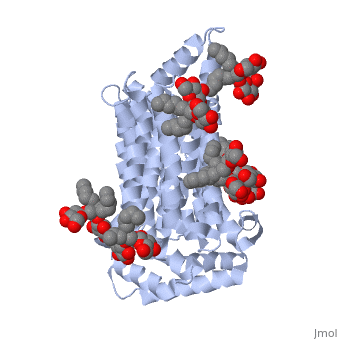This is a default text for your page '. Click above on edit this page' to modify. Be careful with the < and > signs.
You may include any references to papers as in: the use of JSmol in Proteopedia [1] or to the article describing Jmol [2] to the rescue.
Function
The primary biological function of this protein is for glucose transmembrane transport, or the transport of glucose molecules over the plasma membrane. The GLUT3 proteins class that facilitates the transport of glucose and hexoses over the plasma membrane is highly evolutionarily conserved across phyla.
Disease
Relevance
Both the amino and carbonyl termini of the protein are exposed on the cytoplasmic side of the plasma membrane. This protein functions via the . A transport protein exposes a substrate towards either the outside or inside the cell. When the glucose or hexose binds to the site, it catalyzes a conformational change, releasing the glucose on the other side of the membrane. GLUT3 is a unique glucose transporter in that it functions even in times of low glucose.
Structural highlights
The protein contains 12 membrane-spanning alpha helices and has no known post-translational modifications. The first 6 transmembrane helices are in a pseudo symmetrical configuration relative to the last 6 helices. Helices 1, 2, 4, 5, 7, 8, 10, and 11 form an inner bundle that is stabilized by the outer helices 3, 6, 9, and 12. The GLUT3 protein is comprised of ~500 amino acid residues. It has a single site for N-Linked glycosylation, a central cytoplasmic linker domain, and exhibit topologies with their N and C termini, which are both positioned in the cytoplasm.

